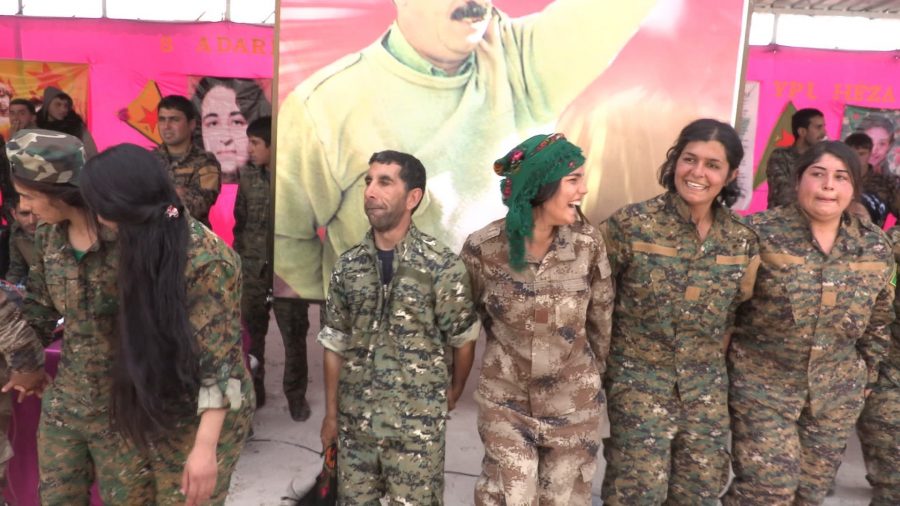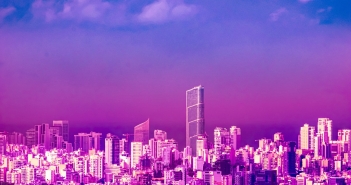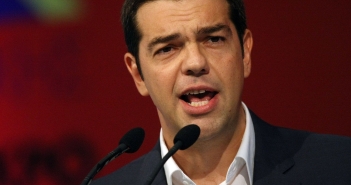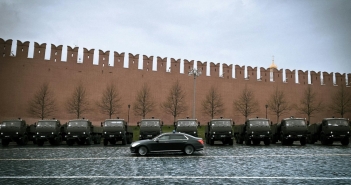Donald Trump’s abrupt announcement of a U.S. troop withdrawal from Syria last October brought dire warnings of an ISIS resurgence in the media, and criticism from its regional allies. There were even mutterings of discontent among fellow Republicans, including Senate Majority Leader Mitch McConnell.[i]
However, a significant number of commentators sounded a note of relief. ‘American troops have no strategic reason to be in that country,’ wrote Simon Jenkins in The Guardian, ‘[Trump’s]desertion of the Kurds and his licence to Turkey to invade Syria must rank high in the annals of diplomatic treachery – but for realpolitik they are hard to beat.’[ii]
Turkish president Recep Tayyip Erdoğan waited barely three days to launch a long-anticipated attack across the Turkish-Syrian border, the first major military incursion into Northern Syria territory since the invasion of Afrin province began under Operation Olive Branch in 2018.
As the U.S. President boasted of having ‘destroyed’ ISIS,[iii] the Turkish military were credibly accused of re-arming and re-deploying ISIS and Al Nusra militias to spread terror in Northern Syria. And, as in Afrin, human rights abuses have been so commonplace that any neutral observer would assume they formed part of a coherent policy. These have included artillery and air bombardment of civilians, the use of white phosphorus,[iv] and terrorism from ground forces.
The Turkish government’s use of ill-disciplined local militias has provided a degree of plausible deniability of war crimes, including, potentially, the widely publicised murder of Hevrin Khalaf on the third day of the invasion.
Reductive Analysis
Coverage of the region in the Western media tends to refer to the Syrian Democratic Forces (SDF) and ‘the Kurds’ interchangeably. This reinforces a reductive narrative of the SDF as being comprised of fearless but naive nationalists, apparently content to sacrifice themselves in the pursuit of a Kurdish statehood aligned to U.S. interests in the region.
Both of these recent Turkish military incursions targeted the largely Kurdish areas of the Autonomous Administration of North-East Syria, also called Rojava, which is defended by the Syrian Democratic Forces (primarily by the YPJ and YPG, the People’s Protections’ Units, which started as humble militias in 2011, before developing into a disciplined fighting force) which Turkey accuses of being controlled by the PKK, or Kurdistan Workers’ Party, defined as a terrorist organization by both Turkey and NATO.
Commentators often blame the leaders of the Autonomous Administration for failure to recognise themselves as just another ethnic faction in a crowded neighbourhood. Indeed, ostensibly left-wing media frequently portrays this unusual political formation as a mere tool of the U.S. government, which has failed to invest sufficient effort in diplomacy with the Syrian government or other regional players.
Such a narrative draws attention from heartening developments occurring on the ground in Northern Syria over the past seven years. There is a revolutionary attempt to create a pluralist, feminist, multi-ethnic and ecologically responsible society in Rojava. Moreover, its administration is not seeking independent statehood, rather, its stated goal is to remain within a reorganized federal Syrian Republic.
The Northern region is multi-ethnic, and the SDF incorporates men and women of Kurdish, Arab, Syriac, Turkmen, Armenian ethnicity and others. Most are Sunni Muslim or Christian, but there are others of different religious identities and none. A significant international volunteer contingent also participated in the campaign, garnering worldwide attention[v] at the height of the campaign against ISIS.
The inclusive and diverse makeup of the military organization is an extension of the civilian administration’s philosophy of democratic confederalism. This entails devolved regional councils maintaining responsibility for their local assets, which interface with neighbouring communities and the central administration.
Full implentation of these new democratic processes is a long way off, with the project, by any reckoning, still in its early stages and threatened by potential new developments in this nine-year-old war.
Development is also hindered by continued Turkish aggression (both military and economic), as well as American capriciousness and regional gamesmanship. Notwithstanding Trump’s withdrawal announcement, the U.S. military maintains a regional presence; Russia has increased its role; while the European Union, Iran, and China keep a close eye on proceedings.
The intensity of the decade-long Syrian Civil War has abated but shows no signs of concluding, with millions of Syrians displaced throughout the country, as well as further afield in Turkey and Europe. Thus, despite providing the forces that retook cities and territories from ISIS over six bloody years, the fate of the autonomous region remains uncertain.
Tug of Allegiances
What next for the people in this troubled region? The U.S. is divided between obligations to its NATO partner Turkey, and to a legacy of alliance with the SDF, which provided ground troops that captured territory from the Caliphate.
The SDF might be expected to police the region and/or counter any renewed insurgency of ISIS. The complexity of the Syrian situation does not, however, lend itself to simplistic narratives, which tend towards vapid sentimentality about ‘the brave Kurds’.
The U.S. media is now almost exclusively devoted to the Democratic Primaries and the Coronavirus panic, and these seem likely to hog the headlines for the foreseeable future. Notably, no Democratic candidate has made any serious statements in respect of plans to help or equip the SDF, or to assist the AANES administration to circumvent crippling economic restrictions.
Trump’s occasional nonsensical remarks on the topic can be roughly interpreted as seeing the U.S. objective in the region purely in terms of extracting natural resources at the lowest possible price, but Trump’s decision last October has forced the regional authority to negotiate with both Assad and Russia, and has effectively gifted American interests in North East Syria to Russia.
Meanwhile, the war continues primarily in Idlib province in the north-west, with Erdogan now using millions of Syrian refugees for leverage against Rojava, the Assad government, and Western Europe. Crucially, oil production in the region, according to a recent interview with a Kurdish engineer, is estimated at approximately 25% of capacity,[vi] due to a deficient refinery infrastructure and reliance on the Syrian government to broker sales.
Uncertain Future
The Rojava project faces great uncertainties. Yet compared to other attempts at regional self-determination in the Middle East over the past two decades, it has seen incredible advances in civil society; albeit at an extremely high price, with approximately eleven thousand SDF affiliated fighters dying in the war against ISIS,[vii] and another twenty-five thousand suffering severe injuries
The demands of regional power brokerage and the precarious economic position of the territory mean that there may yet be serious compromises required in order to retain functional autonomy. Talks continue behind the scenes between the SDF and the Syrian government, brokered by the Russians. The question is: how will Rojava chart a course through this next challenging stage in its short but complex history?
[i] David Smith, ‘Donald Trump isolated as Republican allies revolt over US withdrawal from Syria’, The Guardian, October 8th, 2019, https://www.theguardian.com/us-news/2019/oct/07/trump-syria-us-troop-withdrawal-turkey
[ii] Simon Jenkins, ‘Trump is right to take troops out of Syria. Now they must leave Iraq and Afghanistan’, The Guardian, October 14th, 2019, https://www.theguardian.com/commentisfree/2019/oct/14/trump-troops-syria-leave-iraq-afghanistan-us
[iii] Tim Hume, ‘Trump Says the U.S. Has Destroyed ‘100% of ISIS.’ It Hasn’t.’, Vice News, January 9th, 2020, https://www.vice.com/en_us/article/pkebkg/trump-says-the-us-has-destroyed-100-of-isis-it-hasnt
[iv] Dan Sabbagh, ‘Investigation into alleged use of white phosphorus in Syria’, The Guardian, October 18th, 2019, https://www.theguardian.com/world/2019/oct/18/un-investigates-turkey-alleged-use-of-white-phosphorus-in-syria
[v] Patrick Freyne, ‘The Irish man ‘fighting fascism’ in Syria: ‘I was always curious how I’d react to battle’’, Irish Times, March 24th, 2018, https://www.irishtimes.com/news/world/middle-east/the-irish-man-fighting-fascism-in-syria-i-was-always-curious-how-i-d-react-to-battle-1.3435174
[vi] Mireille Court and Chris Den Hond, ‘Is This the End of Rojava?’ The Nation, February 18th, 2020, https://www.thenation.com/article/world/rojava-kurds-syria/
[vii] Wladamir van Wilgenberg, ’SDF says over 11,000 of its forces klled in fight against the Islamic State,’ March 23rd 2019, Kurdistan24.net, https://www.kurdistan24.net/en/news/0dafe596-6536-49d7-8e23-e52821742ae9




